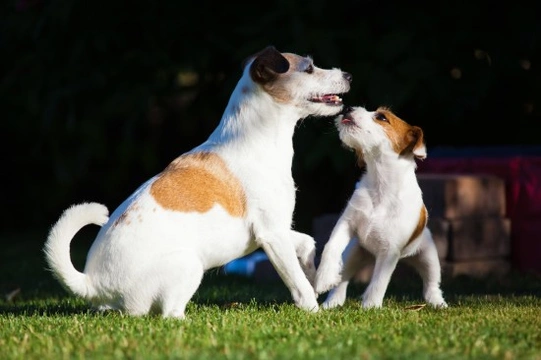
How to keep your puppy from harassing your adult dog
If you already own one dog, you might also be considering getting a companion for your friend by means of purchasing a second dog, and of course, puppies are the most popular new addition to the household, and will often be easier to introduce to an existing dog successfully than another adult dog.
Even the grumpiest and most unsociable of adult dogs tend to give puppies a lot of leeway in terms of the behaviour that they will permit from them, and the smaller and younger the puppy, the more the other dog will generally let them get away with, particularly compared to what they might tolerate from another adult dog. Introducing a puppy into a home with an existing dog can provide a lot of advantages, such as allowing the two dogs to form a lifelong bond, and also, providing an instant friend, frame of reference and teacher for the new pup.
However, while most adult dogs will put up with a lot of silliness from your puppy, there is a limit to these things, and your existing dog may well become unhappy or snappy if the puppy drives them to distraction, and does not follow their cues for when it is time to cool things down.
While there is a lot of merit to allowing your dog to deal with this themselves, and so help to enhance your pup’s understanding of appropriate behaviour with other dogs, you should be prepared to step in and keep the peace if your pup won’t give your adult dog a minute’s rest.
In this article, we will look at the various ways in which you can teach your pup to know when to lay off of your adult dog, and how to stop the youngster from driving your older dog to distraction! Read on to learn more.
Entertain your puppy
While your pup and adult dog will ultimately go a long way towards keeping each other company and providing each other with entertainment, do not view your adult dog as a babysitter or a free pass to neglect fulfilling the need for attention that both of your dogs have.
You as the owner must spend plenty of time playing with, interacting with and training your puppy, and also, ensuring that you do not neglect your adult dog, and give them plenty of attention and stimulus too.
Make sure your adult dog can eat undisturbed
One thing that all dogs take very seriously is their mealtimes, and few things will stress your dog out faster than being unable to eat undisturbed. Ensure that your pup does not harass your adult dog when they are eating, never let your pup steal your adult dog’s food, and keep your pup out of the way when the adult dog is eating if they start being a pain.
Supervise the two dogs together
Obviously you cannot watch your dogs all of the time, but do not leave your pup and grown up dog to their own devices for prolonged periods of time, as they will both get progressively more bored, which will soon manifest as acting out by the puppy and annoyance by the adult dog.
Spend plenty of time with both dogs, and don’t always side with the pup if the adult dog pushes them around or tells them off; this is an important part of the pup’s learning process, and will teach them over time many valuable lessons about playing nicely with others.
Don’t wait until your adult dog snaps
If your pup is facing up to your adult dog, chewing their ears, or viewing your adult dog’s progressive annoyance as hilarious, don’t wait until your adult dog snaps and gets aggressive before you intervene. You should be proactively training the pup all the time both to respond to you and to obey the beginnings of their first training commands, and teaching the pup when enough is enough and to give the grown up dog some peace is important for both dogs.
Let your adult dog have their space
Make sure that your adult dog can retreat from your pup when they have had enough, and that they have a quiet space and bed of their own that the pup is not permitted to use. If your dog can retreat when they have had enough and know that they do not have to remain in the room while your pup is running them ragged, this will go a long way towards reducing their stress levels, and actually make them more tolerant to the pup in the interim as they know that they have the option to retreat.
Your dog and your puppy should both learn to understand that there are both shared resources and things that are their own and not shared, such as toys, food bowls and beds, and instilling this sense of ownership and space in the mind of both dogs will go a long way towards keeping the peace.



